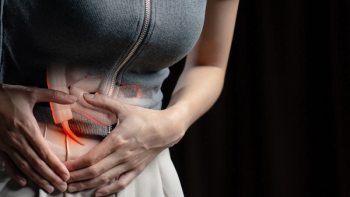
New Drug Combination for Unresponsive Multiple Myeloma Needs a Closer Look
While the use of Kyprolis (carfilzomib), Pomalyst (pomalidomide) and KPd (dexamethasone) to treat some myeloma patients was "promising," researchers said that they will give the combination a closer look.
After a phase 1/2b study, researchers decided to further investigate the use of Kyprolis (carfilzomib), Pomalyst (pomalidomide) and KPd (dexamethasone) to treat patients with multiple myeloma who experienced disease progression on Revlimid (lenalidomide) in the earlier stages of disease.
At the end of one cycle of KPd, more than 60 percent of patients had already achieved partial response (PR) or better, reported Andrzej J. Jakubowiak, at the 2106 American Society of Clinical Oncology (ASCO) Annual Meeting. At two years, the rate of progression-free survival (PFS) is “encouraging,” he said, approaching 13 months.
An increasing number of patients with multiple myeloma are receiving Revlimid-based regimens as first- and second-line therapy. Evidence-based choices for patients progressing on Revlimid-based therapy with multiple prior lines of treatment are limited, as most studies have excluded these patients from enrollment.
Kyprolis and Pomalyst, and their combination with dexamethasone, had shown promising tolerability and activity in heavily pretreated patients with multiple myeloma, including those refractory to Revlimid. This makes KPd an attractive option in less heavily pretreated patients that have progressed on Revlimid-based therapies, said Jakubowiak, Professor of Medicine Director, Myeloma Program University of Chicago Medical Center.
These observations led to the design of a multicenter, single-arm, phase 1/2b study to evaluate the safety and efficacy of KPd in relapsed/refractory multiple myeloma, with a focus on Revlimid-refractory and proteasome inhibitor-naïve/sensitive patients.
The primary objective of phase 1 was to establish the maximum tolerated dose (MTD) of Kyprolis with Pomalyst and dexamethasone, and of phase 2, to explore the efficacy at the determined MTD, defined as PR after four cycles.
Eligible patients included those with relapsed/refractory multiple myeloma with at least one prior line of therapy. Revlimid-refractory disease was required for first relapse. A proteasome-naïve or —sensitive population was required for the primary efficacy analysis.
The phase 1 dose escalation scheme to determine MTD examined four dose levels in which Pomalyst was administered at three to four mg on days one to 21; Kyprolis was given intravenously at 20 to 36 mg/m2 on days one, two, eight, nine, 15, 16 during cycles one to eight, and on days one, two, 15, 16 during cycle nine and afterward; and dexamethasone was dosed at 40 mg weekly from cycles one to four, and 20 mg weekly from cycles five to eight; in 28-day cycles.
In phase 1, the study protocol was deigned to enroll a total of 40 patients but was expanded by two patients to enhance the accuracy of MTD determination. MTD was defined as the probability of dose-limiting toxicity closest to but not exceeding 25 percent.
In phase 2, planned enrollment was 30 Revlimid-refractory but proteasome-naïve or —sensitive patients treated at the MTD for primary efficacy analysis.
The overall patient population consisted of 56 patients; the primary efficacy population consisted of 46 patients, including 21 at MTD. Years from multiple myeloma diagnosis were 5.3 years in the overall population and 6.1 years in the primary study population. Thirty-five percent and 29 percent, respectively, had high-risk disease, and 14 percent and 12 percent, respectively, had deletion 17p.
About 80 percent of the study cohort received two or more prior lines of therapy, and approximately 40 percent received three or more prior lines. Ninety-two percent of the patients met criteria for refractory disease, the vast majority of whom were refractory to Revlimid.
Dose-limiting toxicities were experienced by one of three patients at dose level 1, four of 26 at dose level 2, and four of 13 at dose level 3. All dose-limiting toxicities were asymptomatic cytopenias (eight grade-3 neutropenias and one grade-4 thrombocytopenia). The probability estimate of dose-limiting toxicity at level 3 was 24.8 percent, which was closest to the preselected 25 percent. This dose was established as the MTD and therefore was chosen to advance to phase 2. Dose level 3 was Kyprolis, 27 mg/m2 on a twice weekly schedule; Pomalyst, four mg on days one to 21; and dexamethasone, 40/20 mg weekly.
Most adverse events were grade 1 or 2, with anemia, neutropenia and thrombocytopenia as the most common hematologic toxicities. Gastrointestinal adverse events, musculoskeletal pain and fatigue, each occurred in about 60 percent of patients, and infection and dyspnea each occurred in slightly more than 40 percent of patients. Hypertension, mostly grade 1 or 2, occurred in 25 percent of patients.
The median treatment duration was 9.5 cycles; 82 percent completed 4 cycles and 57 percent completed eight cycles. Thirty-six percent of patients remain on treatment. The main reason for discontinuation was progressive disease (83 percent).
After four cycles, 72 percent of all response-evaluable patients and 73 percent of the primary study population had a PR or better.
“Importantly, responses were very rapid,” said Jakubowiak.
At the end of one cycle, 65 percent of all response-evaluable patients and 61 percent of the primary study population were already in PR or better. Depth of response improved with continued treatment. On intent-to-treat analysis, 84 percent achieved PR or better, with 21 of 30 planned patients being treated at MTD.
After a median of 17.9 months of follow-up, median PFS in the overall study population was 12.9 months and median overall survival had not been reached. At 24 months, 78 percent of patients were still alive.
With only limited data on the activity of established regimens in patients with multiple myeloma who progress on Revlimid, further exploration of the KPd regimen in a randomized setting is warranted, said Jakubowiak.




